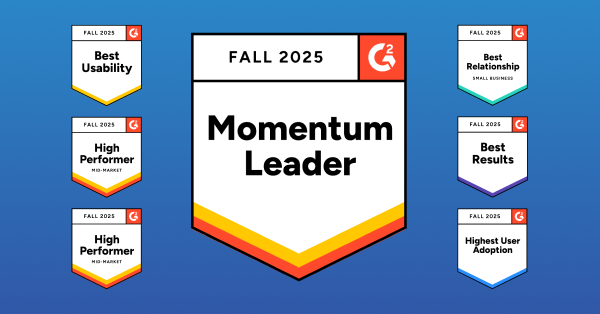The Ultimate Guide to Implementing a LIMS


While some vendors claim their LIMS comes “ready to use,” the reality is that every LIMS requires implementation to match your lab's specific workflows and regulatory requirements.
Even the easiest to use and most intuitive platforms require some form of implementation to ensure that your workflows are set up correctly and that your lab can get work done while meeting regulatory requirements.
If you want to set your lab up for success (and speed processes up rather than slow them down), a successful implementation isn’t a suggestion; it’s a requirement. Read on to learn more about the LIMS implementation process and how to prepare for it to set your team up for success.
The Steps to Implement a LIMS
We can’t provide a one-size-fits-all implementation plan here in this article because the needs of a small OTC makeup lab will differ from a large R&D lab, not to mention the thousands of variations in between.
But we can (as transparently as possible) give you an idea of how we at QBench approach implementation for our customers.
At QBench, we begin by understanding the scope of the implementation. This will depend on the size of your lab, your custom solutions and integrations, instruments, and more, and then we move on to one of three paths:
- Guided Configuration & Training: In this option, our team trains your team on QBench functionality and provides co-configuration time to help the lab get off to a successful start with critical systems. This gives you more structured guidance while allowing your team to control the hands-on process of setting up the LIMS.
- QBench-led: With this option, our team takes an active role in configuring your LIMS. QBench creates requirements with you for the key configuration areas, completes the configuration for you, and then trains you on how everything works for the long-term maintenance of the system.
While the steps to implement a LIMS will vary from lab to lab, you can expect the following essential steps:
- Kick-off call: This sets the stage for a successful implementation, allowing your lab to begin the implementation process.
- Settings and configuration setup: We’ll review product configuration options, statuses, and custom fields in QBench to ensure you are ready to receive the data for your workflows.
- A review of worksheets and testing: We’ll cover QBench’s worksheet engine and testing features to capture test and batch results and create calculations for Reports. This also includes Protocol Steps and Control management.
- Reporting Training: We'll walk you through how to utilize the visual template editor to create your different reports (e.g., CoA, CoC) and insert test result information from the worksheet or result fields along with other key information (e.g., order and customer information, charts).
- End-user training: After configuration is complete, we provide training to your technicians to demonstrate how they will utilize QBench in their daily workflow.
- Go-live: Finally, we’ll wrap things up with a final call to address any remaining questions and go live.
QBench’s Implementation and Training teams will also schedule instructor-led training on how to become self-sufficient in configuring new workflows, test methods, and reports. Some LIMS choose to do all of the training very early in the implementation, which can lead to fatigue and training decay.
Other LIMS wait to train on their systems until the system has been fully configured. This can lead to frustration and misaligned expectations during requirements gathering if customers are unclear on the capabilities of any given LIMS system.
At QBench, we’ve optimized the training curriculum to hyper-focus on training content that will complement and support the requirements gathering very early in the engagement, and then schedule additional training sessions throughout the implementation to maximize comprehension and retention prior to Go Live. Our team will ensure that the lab has the right level of system knowledge to provide configuration and workflow requirements thoroughly and accurately the first time, which reduces overall project timelines!
We've also found, after working with hundreds of labs, that there can be a temptation to get everything configured perfectly before going live (you may have heard this referred to as a “Big Bang” approach).
We understand that mindset when working in regulated industries. However, we've seen that mindset work against getting value quickly over and over again. We also have observed that by completing a subset of test methods and getting them into live production by lab staff quickly creates a virtuous cycle for the rest of the test methods. This is because project team members understand the process and how to collaborate with QBench to accelerate cycle time. Getting a subset of methods live quickly also builds confidence and positive momentum that fuels excitement among the team.
We refer to this as “Phased Implementation,” and we strongly encourage all customers to adopt this approach. A phased approach prevents project teams from biting off more than they can chew and prevents project teams from experiencing “implementation fatigue”.
Adopting the phased approach (where we partner with you to identify the essential pieces to get up and running first) provides more value, much more quickly. Customers often gain a deeper understanding of the system after the initial phase, enabling them to make more informed decisions about system configuration and the order in which to layer on additional functionality in subsequent phases of the project.
In addition to the core system training workshops, labs using more QBench features will also go through the following optional steps before the End-user training:
- Automation setup (optional): Automation is a key advantage in a LIMS, so we spend plenty of time walking through QBench’s automation features and setting things up for your lab.
- File Parser setup (optional): If your lab has a testing instrument that can produce a file output, you can create an in-application file parser to consume the file and place the results on the worksheet to eliminate manual entry of test result information.
- Inventory review (optional): We’ll walk through QBench’s inventory management features.
- QMS review (optional): We’ll walk you through the setup and compliance features in QBench’s tightly-integrated QMS.
- Customer portal setup (optional): We’ll walk you through the customer portal and how customers will create order requests for your approval, so your team doesn’t have to enter the information themselves.
- Billing & Invoicing (optional): We’ll walk you through how our Billing & Invoicing module helps you streamline your accounting, from creating quotes to auto-generating invoices to syncing payment activity to integrating accounting software.
- BI Integration (optional): We'll walk you through how our BI (Business Intelligence) integration works so you can turn your valuable LIMS data into insights using powerful data visualization and analysis tools.
Your implementation timeline will differ depending on the size of your team, the number of tests your lab runs, the throughput, the number of automations, and the scope of your needs. We’ll cover this in detail a bit later to give you an idea of how long a QBench implementation takes.
If you're not using any of our automations, File Parsers, inventory management, QMS, or Customer Portal features, then your implementation will skip those steps. Of course, we will always help you add those things later if you prefer to start with the core workflow tools and then layer on additional functionality.
How Long Does a LIMS Implementation Take?
We know what you’re thinking: the horror stories of 6-month implementations racking up over $30,000 in extra charges on top of a $30,000/year commitment are enough to make any lab weary of grandiose marketing claims.
One such lab we spoke with still felt the sticker shock of a previous vendor quoting them $100,000 just to get started – not to mention additional fees for any changes post-implementation.
The timeline for your implementation will vary based on the following factors:
- Your workflow (sample prep steps, batch testing, quality control process, calculations, reporting, etc.)
- Which modules you set up (e.g., Inventory Management, Quality Management, Billing, etc.)
- Whether you are integrating lab instruments
- How many automations do you need to set up
- Whether you are integrating any third-party software.
Speaking from experience, the typical implementation timeline for customers setting up workflows, configuring a customer portal, creating report templates, managing inventory, and using our Guided Configuration & Training package is three to four months.
As mentioned above, Implementation timelines are reduced considerably for customers who choose to apply the Phased Implementation approach, due to the experience gained in the initial phase. When customers commit to getting a subset of the project live as quickly as possible, it creates a cascade of smaller, successive “wins” that keeps the team motivated and gives end users the opportunity to get comfortable using the system incrementally, which can be much less intimidating than the “Big Bang” method (which we do not recommend).
Simpler implementations can be completed more quickly, and some customers dedicate additional time and resources to the project, allowing for configuration and training to be completed within a matter of weeks. Our team is here to help you hit your goal date for getting a LIMS up and running. We will discuss your timeline with you and recommend the best approach to help you meet your deadline. The project timeline will be addressed during the scoping of your implementation.
We believe a 3-month implementation is best-in-class compared to most of the LIMS industry.
In cases where a tech-savvy customer resource can commit significant time to the project, an implementation can be as brief as as 40 days, as was the case for Light Labs.
“Onboarding with QBench was great. We had everything up and running quickly for processing tests and samples, and then we have been iterating from there. We started with a simple setup and have been able to scale QBench alongside us as our processes have grown more complex.”
Jonah, Founding Engineer at Light Labs
The combination of Light Labs’ dedication to the project and QBench’s ease of configuration enabled the project to progress from kickoff to a system ready to process samples in approximately 40 days. A Time To Value (TTV) that is virtually unheard of in the LIMS industry.
Many second-time LIMS buyers love purchasing QBench because they’ve been through the train wreck of a 9-month to 1-year implementation with a slower vendor. Here’s what the EO Science Lab Supervisor, a customer who had used seven different LIMS during her career, had to say after a QBench implementation:
“QBench is easy to use and understand, allowing laboratory management to configure almost everything with minimal support needed. It is highly configurable while not overwhelming. Implementation is much faster than other systems due to the ease of use and configuration. Plus, QBench is constantly enhancing the product with new features and providing easily accessible help tools.”
There are ways to shorten this timeline, as well as factors that can lengthen it. We’ll explore those next.
What Can Shorten Your LIMS Implementation?
It’s rare that a lab comes to us with a long timeline. More often than not, labs are thinking of an implementation in terms of weeks and the 9-12 month warnings you may read about.
As shared above, our 3-month target sits among the best in the industry, but you can shrink that by quite a bit. Here’s what we found can improve your odds of success (and speed things up):
- Work out your SOPs and workflows beforehand: By thinking through your Standard Operating Procedures (SOPs) and workflows beforehand, you can speed things up a great deal, as we’ll spend more time implementing your processes and less time designing (and then implementing) them.
- Engage and keep momentum with configuration tasks: Keeping an open line of communication and prompt completion of tasks will allow you to keep your implementation moving smoothly and minimize lags or hiccups.
- Dedicate more resources to the project: Dedicating more time and/or more people to the project allows you to speed up configuration. Strategically bringing in parts of your team during the training sessions most relevant to them allows them to participate, ask questions, and learn. It also speeds up task completion as you can delegate more across your team rather than leave it to a few individuals.
- Meet multiple times each week: The more often you can meet with your implementation team, the more ground we can cover from week to week.
- Paying QBench to accelerate the timeline: You can also pay QBench to complete parts of the LIMS configuration and implementation for you.
- Consider a phased approach: We find that a phased approach can rapidly speed things up. Beginning with a subset of test methods to production quickly can give you confidence in the system, hands-on experience in the software, and make the process for future collaboration much easier. While the “big bang” method of getting everything set up in one go may seem appealing, it often leads to a longer process in the end.
If you are looking for an exceptionally speedy LIMS implementation, follow the above tips to help set your lab up for success.
What Can Lengthen Your LIMS Implementation?
On the flipside, what dooms a LIMS implementation from the start?
From experience, more complex lab setups or infrequent meeting times can extend your implementation timeline. These may not all be “bad” things; however, the following factors are worth being aware of as you prepare for your implementation:
- Custom third-party software integrations: The more systems your lab integrates with, the more care we’ll need to take to set things up and ensure your systems communicate correctly with each other. Similarly, working with external vendors that need to be kept informed can also stretch things out.
- Missing configuration meetings or failing to complete tasks: Skipping/punting meetings or failing to follow through on implementation tasks will add time to your implementation schedule.
- No SOPs set: Newer labs without SOPs or instruments in place will prolong the process, as these need to be established first before your LIMS can be implemented.
- Long testing/validation process: Lengthy testing and validation processes can significantly extend your timeline, especially if they need to be repeated multiple times.
What Makes For a Successful LIMS Implementation?
Timeline aside, here are ways to set your LIMS implementation up for success out of the gate. These are factors we’ve seen help labs be the most successful when implementing QBench LIMS:
- Set up your SOPs in advance: Have clearly defined Standard Operating Procedures and a detailed description of their workflows. This will organize your processes and make it much simpler and quicker to set your lab up on a LIMS.
- Prepare for the work ahead: While our team is here to support and guide you through the implementation processes, the better you can prepare for the work ahead and carve out the time to meet and complete tasks, the more successful your implementation will be.
- Show us what you need built: If you have examples of what you want to configure in QBench for worksheets, complex calculations, and final reports, our team can make sure everything is set up correctly.
Keep these factors in mind, and you’re on your way to a successful LIMS implementation.
Cloud-Based vs On-Prem: Know Your LIMS Before Implementing
All LIMS are the same, right?
Not quite. Beyond the obvious factors like complexity and price, there is a massive difference in your experience between on-prem LIMS and cloud-based LIMS.
An on-prem LIMS will require additional work on your part to:
- Provide and manage hosting and hardware
- Host and manage both UAT and Production environments
- Design, configure, and manage backup and restoration solutions
- Install the software and subsequent releases
- Set up IT and security resources
- Make custom-coded requirements to meet your lab’s specifications
Not to mention the fact that you will be responsible for troubleshooting issues with deployment, between pulling logs, recording videos, and endless Zoom meetings, you can easily sink hours into time-consuming back and forth with your vendor, delaying your deployment in the process.
The delays and added infrastructure needs for an on-prem LIMS can inflate your LIMS investment to $100K or more for the first year when you factor in licensing costs, development time, and IT spend. This alone can make your LIMS ROI negative for your lab.
A cloud-based LIMS, on the other hand, removes much of the above from your plate entirely. A cloud-based LIMS implementation will revolve around setting up and configuring the software to meet your needs, eliminating any headaches around hosting and IT concerns that often bloat lab budgets before they get off the ground.
How to Prepare For a LIMS Implementation
As the saying goes, preparation prevents regulatory failures.
The more prepared you are for each meeting, the more productive your implementation sessions will be, and the sooner (and smoother) your lab can be set up on your LIMS.
We recommend you have the following items ready to go:
- Custom data fields specific to your line of business
- Formulas for complex calculations
- Test result capture (Worksheet) examples
- Chain of Custody document example
- Report examples (e.g., COA or Certificate of Analysis)
- Label examples
- Pricing sheets (if billing is involved)
- Instrument file examples for any planned file parsers
Having these items ready validates your lab workflows so that when we meet, any unexpected use cases can be quickly resolved. It also allows more decisions to be made in real time, which keeps the project's momentum high.
Questions to Ask Before Your LIMS Implementation
Your LIMS implementation is also an opportunity to evaluate your vendor and make sure they are a good fit for your lab.
The sales process may make your LIMS seem seamless and easy to set up, but by asking a few key questions, you get a better sense of what implementing and using your new LIMS is going to be like.
To help you evaluate your LIMS vendor and their implementation process, we recommend asking the following questions:
- What systems and software do you integrate with? Make sure the LIMS can support integrations with your equipment.
- How much custom code needs to be written versus configured in the app?
- A follow-up question here might be whether further development support is needed to update workflows or whether your staff can be trained to do it.
- What is the typical implementation timeline?
- How often do you hit your timeframes?
- What happens if the implementation goes over the planned timeframe?
- What are your support hours and SLAs?
- What is your process for feature requests and feedback?
By asking a few key questions before setting up your LIMS, you ensure that it’s the right fit for your lab and needs and will sustain your lab in the long run.
Watch Out for the Complexity Tax With Most Legacy LIMS
Comparing one LIMS to another isn’t so simple as scanning a table, though, and reviewing the price.
That’s because there’s a hidden cost to most LIMS – and it’s one that QBench actively eliminates for our customers. That cost is complexity.
When we mention “legacy LIMS” in contrast to QBench, we’re talking about the established players on the market. These LIMS have been around for a while, and as a result, they tend to lock users into outdated and overbuilt solutions that require:
- Expensive on-prem hosting
- Regular maintenance and updates
- Expensive custom development to make even the simplest changes
Labs have told us that many legacy platforms have confidently told them that they can build the custom workflows and functionality needed to make the LIMS work… but fail to mention the thousands of extra dollars that will be spent on services to make that happen.
Not to mention thousands more spent on future changes (and you will need future changes). A LIMS should save your lab time (and money, thanks to all that saved time for your staff), but many legacy LIMS run the risk of being ROI-negative when all is said and done.
That’s where QBench stands out. We understand that lab workflows can be sophisticated and varied, but you don’t need to make it complicated to make a basic change. Whether you want to automate batch test re-runs, send alerts for low stock levels, generate reports with one click, or re-order supplies, you can do it all with QBench in minutes and not hours (or worse, weeks if you’re waiting on development teams).
What Separates QBench LIMS From the Rest
No two LIMS platforms are the same (check out our guide to the best LIMS among the industry winners).
Here’s what makes the implementation process for QBench LIMS different from other industry-leading LIMS platforms:
- Business-focused outcomes
- No-code tools avoid brittle custom code
- Thoughtful module integration
- Education is our priority
- Sandbox account to test and onboard new staff
Business-Focused Outcomes
We’re committed to helping labs get more done rather than get bogged down by complex systems and software. Our LIMS is designed to be managed by business users: this means no coding or development experience is required to set up new processes or workflows on QBench LIMS. If your team can use Excel formulas, they will be able to configure worksheets and reports on QBench.
No-Code Instead of Custom, One-off Development
Alright, what does no-code really mean?
Many LIMS vendors are switching their verbiage to “no code” or “low code” while still requiring extensive development services to update a COA or even a simple logo.
QBench’s modern approach to deep workflow configurability sets us apart. With QBench’s no-code tools, you can easily change workflows as your lab’s processes and requirements change. After working with hundreds of labs, we’ve found that every lab evolves over time, so having a flexible and adaptable LIMS is essential. Being able to update workflows and reports yourself will save you considerable amounts of time and money over the long run. That means you are empowered to make changes post-implementation rather than needing to contact the LIMS vendor or a developer to make changes down the line.
Thoughtful Module Integration
Our modular approach to implementation allows us to be flexible on the pace of your project. We can speed things up or slow things down depending on your needs. Combined with QBench’s many secondary modules that work together, that means we can work with you to find the right pieces of software for your lab and integrate them for your team. Modules you can add include:
- Inventory Management
- QMS (Quality Management System)
- Billing and Invoicing
- Customer Portal
- EDD (Electronic Data Delivery) Builder
- BI (Business Intelligence) Integrations
- Integrations to many other best-in-class software (from accounting tools like QuickBooks to ERPs like NetSuite to CRMs like HubSpot)
Each can be seamlessly integrated into your LIMS, saving you hundreds of hours of manual work per year.
Education is Our Priority
While we have extensive live training for administrators, we also have a Training Center where anyone can view videos and practice pre-planned generic exercises in a sandbox environment and a Knowledge Base with extensive documentation on how to use the various features within QBench. We train customers on real-world examples whenever possible for maximum effectiveness. Additionally, all product training sessions are recorded so that you or anyone in your lab can reference the training later. These tools can be invaluable to speed up the onboarding of new staff members to your team.
Free Sandbox Account to Test
Need to test something out or train your new staff? Don’t worry about breaking something in your LIMS; we provide a sandbox for every customer to use for testing and training purposes. We've built numerous import/export tools to allow you to try things out in your sandbox and then easily import those into your production environment. And you get a sandbox instance forever at no extra cost.
Looking for an Easy-to-Implement (Yet Robust) LIMS? Download the Free LIMS Buyer’s Guide to Select the Right One
A LIMS helps streamline laboratory workflows, improves data quality and traceability, and enables better decision-making based on accurate and reliable data. For these reasons, a LIMS is a wise investment for any lab, but only the right LIMS.
A cloud-based LIMS is superior to an on-prem LIMS, thanks to improved security, scalability, and built-in compliance features.
But which cloud-based LIMS should you choose?
You need a LIMS that helps you work smarter and not harder, with unparalleled flexibility to drive whatever the future brings. To help you decide on the best LIMS for your lab, click the button below to download the free LIMS buyer’s guide.








